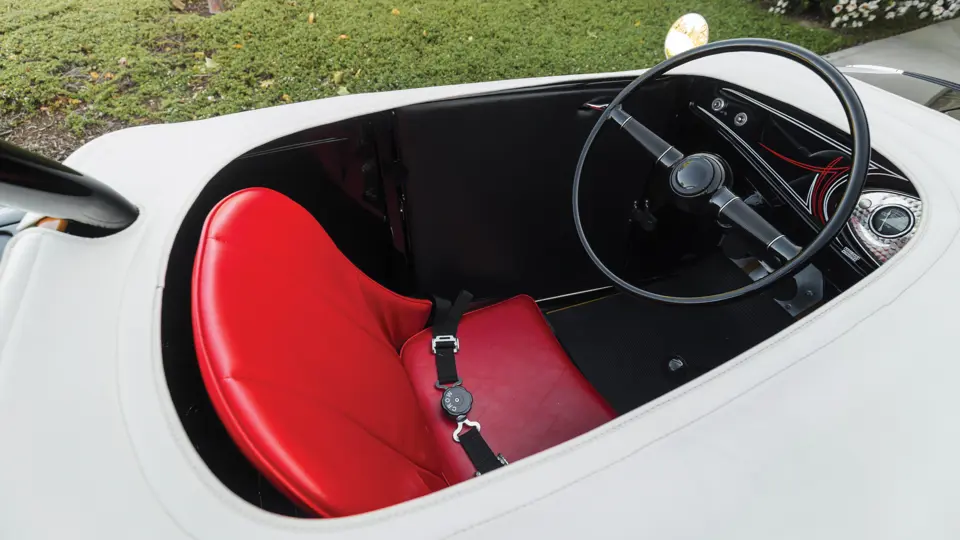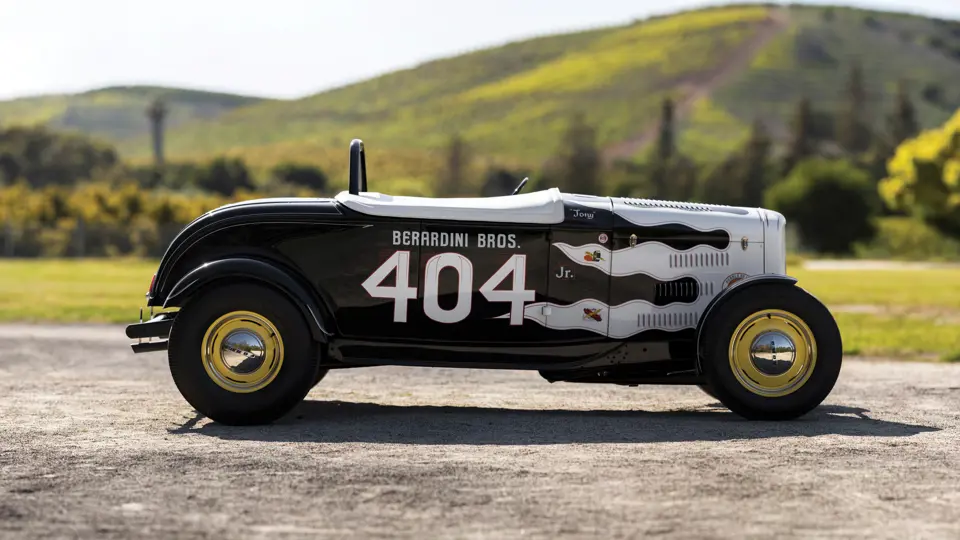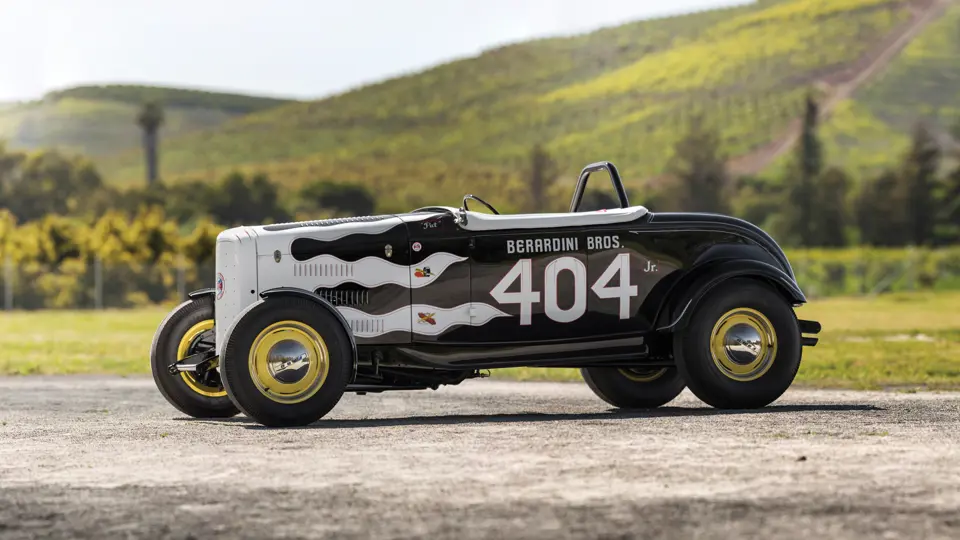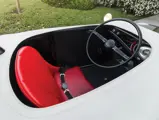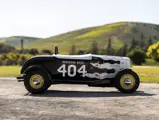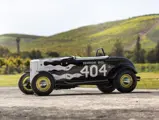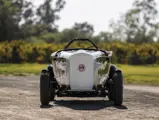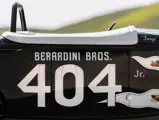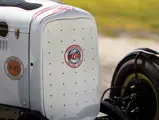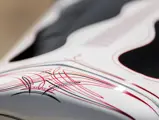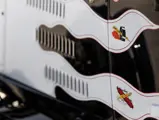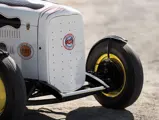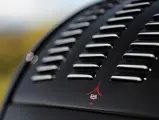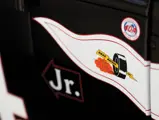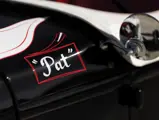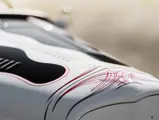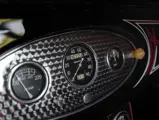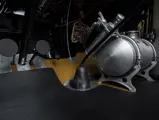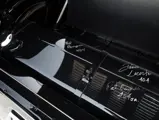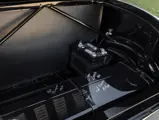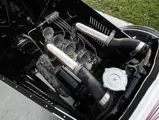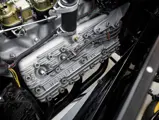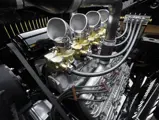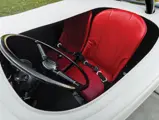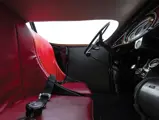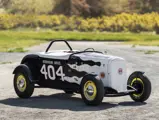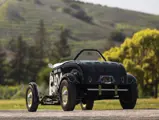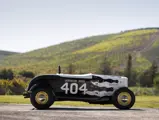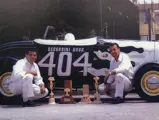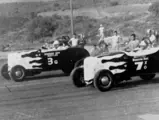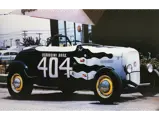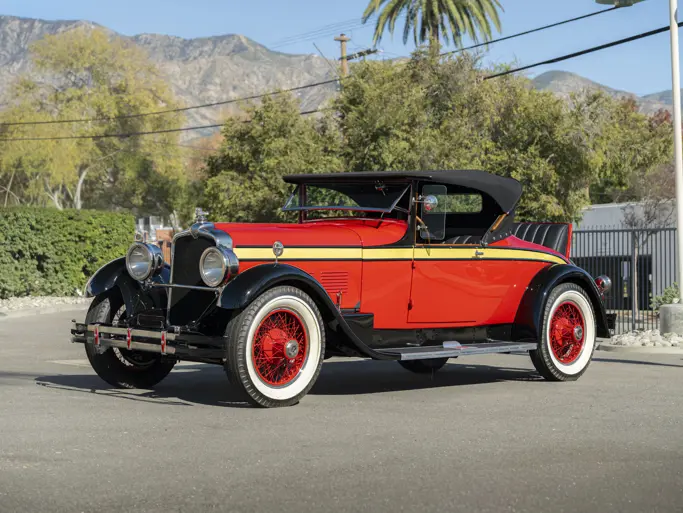
1932 Ford "404 Jr." Roadster by Berardini Bros.
{{lr.item.text}}
$324,000 USD | Sold
{{bidding.lot.reserveStatusFormatted}}
- Virtually unbeatable on LA-area drag strips in the 1950s
- Former NHRA Street Roadster Class world record holder
- Fully restored by Dave Crouse of Loveland, Colorado
- Powered by a full race, four-carb Ford flathead V-8
- Featured in Rodder’s Journal, issue 32
- Featured in Deuce as one of the 75 finest 1932 Ford hot rods of all time
- Dean Batchelor Award winner at the 2007 Pebble Beach Concours d’Elegance
- Probably the most extensively documented and researched ’32 Ford roadster
The ’32 Ford roadster, better known as the “Deuce,” is an undisputed hot rod icon. This car, with its long, documented racing history, is one of the finest of all time. The Berardini Brothers racing team was virtually unbeatable at Los Angeles-area drag strips from Santa Ana and Saugus to Orange County and Colton. Pat and Tony owned the Gas and Fuel Street Roadster Championships from 1950–1955, setting track records wherever they ran. Painted jet black, with white flames, their cars were pinstriped by the legendary Kenneth Howard, better known as Von Dutch.
Tuned to the max, the Berardini roadster duo seldom lost a contest. Pat (in this ’32) and Tony (in a ’29) wore matching white uniforms that complemented their cars. The “404” roadster ran a big 314-cu. in. Ford flathead with a four-carburetor Edelbrock intake, Harrell high-compression heads, and a Harman and Collins magneto. The engine was bored to 3-3/8 inches and a handmade billet crank was stroked 5/8 of an inch to 4-3/8. The Berardini’s speed “secret” was an Iskenderian 404 racing camshaft.
Ed Iskenderian says he developed the 404 after copying a radical cam profile that the legendary Ed Winfield designed for a twin-cam, Offenhauser racing engine. “The lift was actually .400,” Ed says, “but 404 sounded better, so that’s what we called it.” Isky sold his full-race 404 cam with special radiused tappets. Its high valve lift and long duration were unsuitable for street use, but for racing, it was a winner. The roadster’s performance dramatically improved and 404 immediately became the car’s racing number. Pat lettered it on both doors. When Pat’s son was born, he added “Jr.,” and the distinctive black roadster became known as “404 Jr.”
The roadster consistently ran in the low 12s with a best time of 111-to-112 mph. “We started winning over 80 percent of the races,” says Pat. “With that 404 cam, we were pretty consistent. We had low-end power and our mid-range and top end were enough to hold ’em off. One time, at Bakersfield, Tony’s car was apart, so he stripped the fenders off my ’32, and won the gas roadster class.”
Someone commented to Pat Berardini that he was not running hard enough. On his next run, Pat hammered the ’32’s teaspoon-shaped gas pedal so hard, he forced it right into the roadster’s wooden floorboard. The throttle stuck, and revs skyrocketed. Pat switched off the ignition and coasted to a stop. “After that,” he said, “we installed a strip of metal under the gas pedal, so I couldn’t drive it into the wood again. The expression, “put the pedal to the metal,” literally described Pat Berardini. He was a charger.
This ’32 roadster appeared in the 1954 Glenn Ford/Ann Francis/Sydney Poitier classic, Blackboard Jungle, a film best remembered for the driving beat of Bill Haley and the Comets’ “Rock Around the Clock.” The black deuce appeared briefly in a wild scene where two street racers bear down on Francis and Ford, who narrowly escape tragedy.
By 1955, after racing most weekends for six years, they sold the “404 Jr.” for $975 to Jeano LaCoste, from the San Francisco “Pacers” club. For just $975 LaCoste kept the “404” number, and proceeded to extend the fast, flathead-powered highboy’s winning record to strips in Northern California, winning the tile, “the Racing Man’s Deuce.” Jeano improved the trap speed up to 115.66 mph with a 11.75 second E.T. At Oakland in 1956, it won the Competition Roadster Class. In 1959, again at Oakland, “404 Jr.” won the All-American Roadster award. The car’s finish became Goldenrod Yellow, but the roadster still wore its hallowed numbers.
By the mid-1950s, working with Charlie Tabucchi, LaCoste installed a 354-cu. in. ’55 Chrysler Hemi with an eight-carb log manifold, Winfield cam, and Vertex magneto. A ’37 Buick three-speed replaced the ’39 Ford transmission. Halibrand magnesium wheels and a Halibrand quick-change rear end were added. Tabucchi and LaCoste added a powerful 6-71 GMC supercharger, over-bored the engine to 360 cu. in., added two-port Hilborn fuel injection, and cleaned house. Running at Half Moon Bay drag strip, on 10 September 1961, where the thick, damp sea level air improved combustion, Jeano set a World Record in the A/Gas Competition Roadster class, turning 136.36 mph in 11.61 seconds.
LaCoste sold the roadster to Rudy Perez, of Alamo, California. Rudy swapped a Chevy small-block V-8 for the Hemi, replaced (but kept) the original frame, with a California Street Rods chassis, then put over 185,000 miles on the roadster, over 37 years. At the 2003 Grand National Roadster Show, Rudy won the Brizio Family Award for the best street-driven hot rod.
Roger Morrison saw the “404” roadster at the Grand National Roadster Show in 2004 and said that he wanted to restore the car back to the way the Berardinis ran it. The roadster was shipped to Dave Crouse’s shop in Loveland, Colorado, for a frame-off restoration. Roger had videotaped Pat Berardini, and collected historic photos, to learn the details of the much-altered roadster. Pinstriper Alan Johnson had to match the work of Von Dutch. Johnson said, “We both held our striping brush the same way. I felt I was doing it right.”
Mike Spacek and Jim Stroupe found the missing parts. “Roger Morrison insisted we use the original frame and repair it as needed,” Dave continued, “even though we both knew it would be more time-consuming and expensive.”
“I come from a background that prizes original things,” adds Morrison. “I didn’t want to say we’d restored the car, but it didn’t have the original frame. Saving the frame was about five percent of the cost of the entire restoration. That was worth it for a ‘no-excuses’ car.”
“It was a challenging restoration,” Dave Crouse says. “We bored a flathead block 1/8 over and installed a new SCAT crank and 8CM rods. I have a trick for those four carburetors, so they open and close simultaneously, they’ll idle, and they pull smoothly.” Isky personally pulled his last 404 camshaft and lifters off the shelf, to ensure the born-again flathead would have the 404’s characteristically rough idle and sharp throttle response.
The full restoration took nearly two years, and the coming-out party was an emotional affair. When Pat Berardini climbed into his old car and fired it up, right in the NHRA Museum, the sharp crackle from the twin exhausts, and the engine’s healthy idle, left no doubt the old warrior was ready to take on all comers, just as he had, so long ago.
At the 2005 Grand National Roadster Show in Pomona, the freshly restored Berardini Brothers ’32 roadster won the coveted Bruce Meyer Preservation Award, honoring the best in historic hot rod restoration. It then went on to the 2007 Pebble Beach Concours d’Elegance where Edsel Ford presented the car – with Pat Berardini riding shotgun – with the coveted Dean Bachelor Award for the most significant hot rod. The Berardini Brothers’ roadster has also been featured in countless magazine articles, most significantly the 32nd issue of Rodder’s Journal celebrating, of course, the ’32 Ford roadster. Furthermore, it was featured in Deuce, as one of 75 of the finest 1932 Ford hot rods of all time. Exhaustively researched by Roger Morrison, the roadster includes videos of it racing in the 1950s, interviews with Pat Berardini, the aforementioned magazine articles, etc. It is without a doubt the most documented historic hot rod.
Perfectly presented today – and a winner as much now as it was then – the legendary Berardini Brothers’ “404 Jr.” is ready to continue its winning ways as one of the most significant hot rods on the planet.
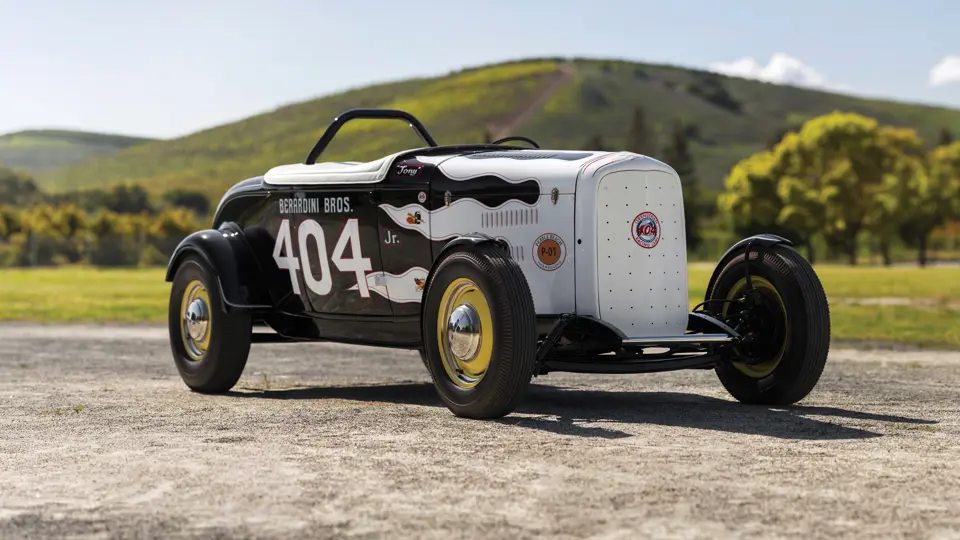
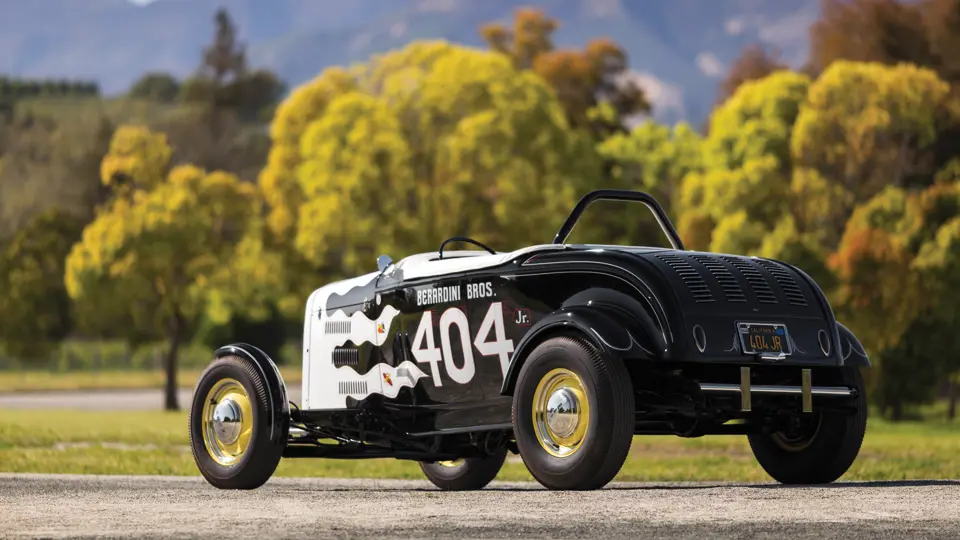


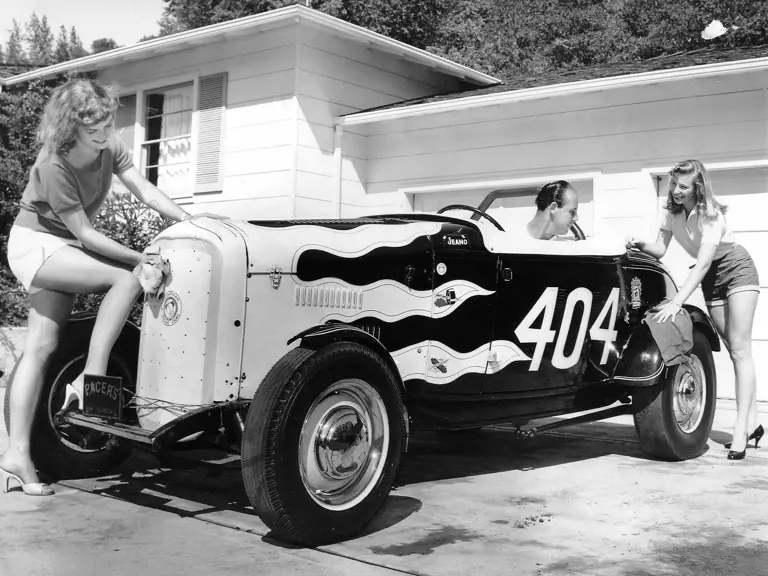
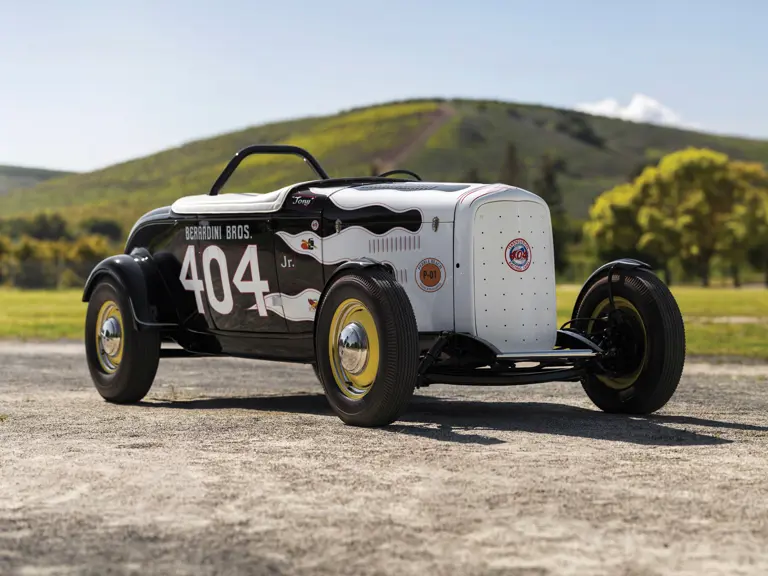
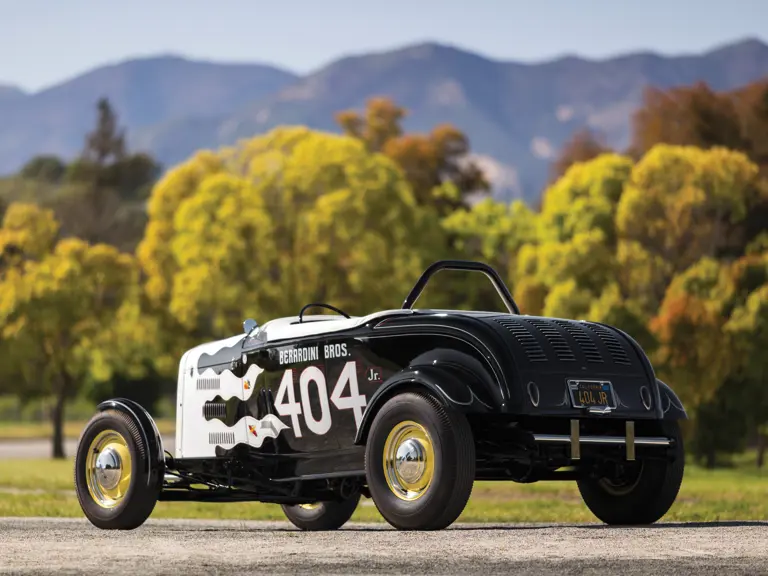

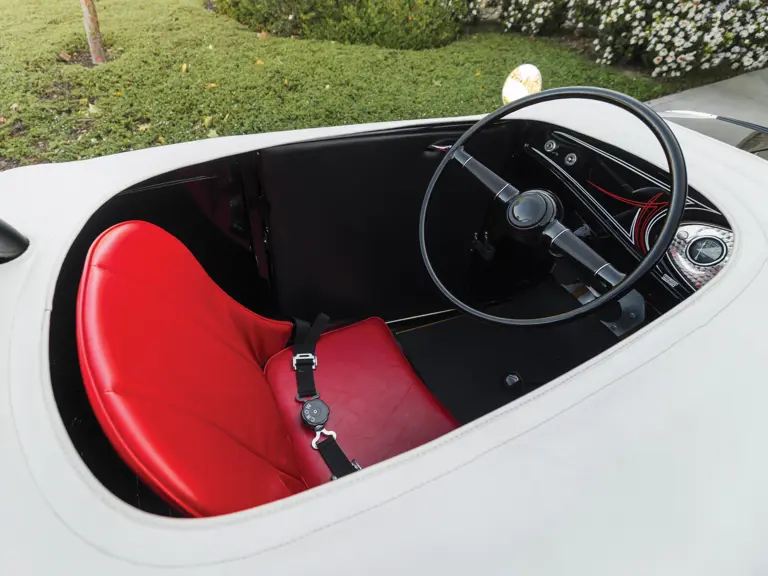
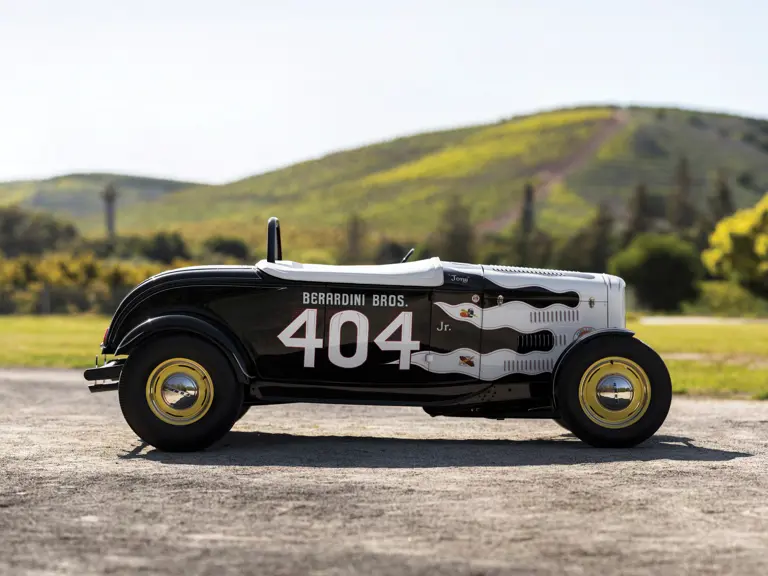
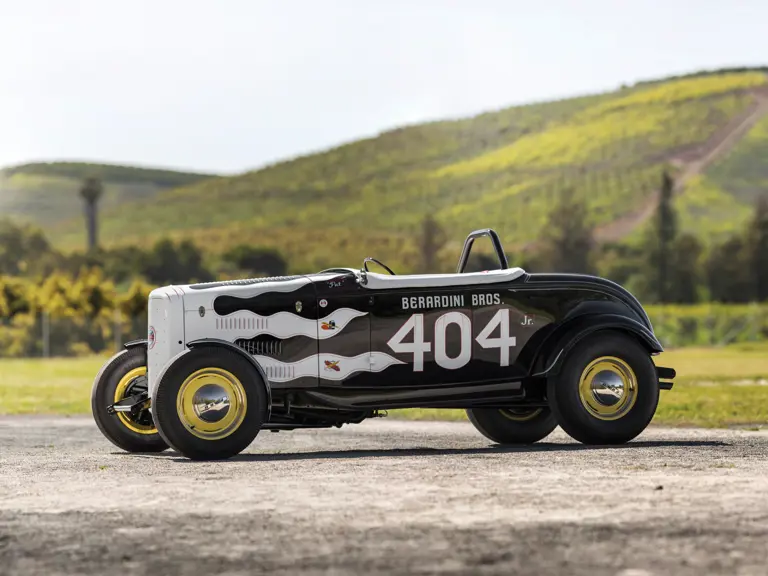

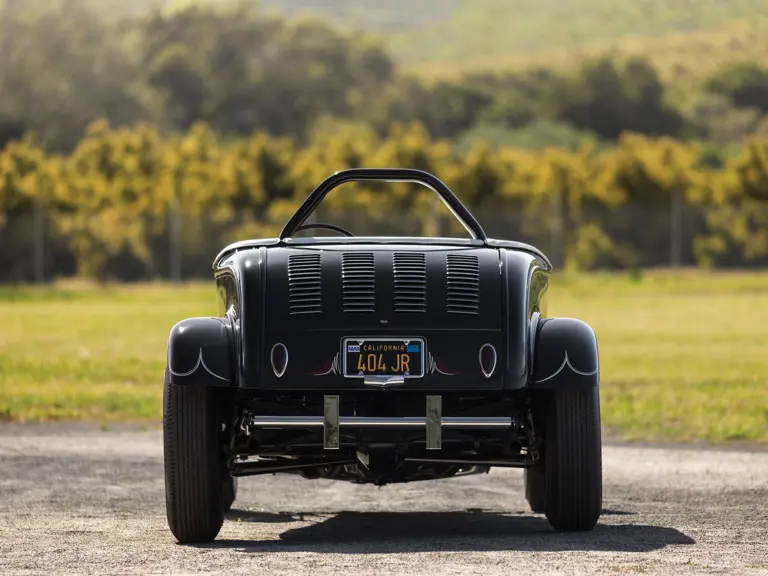
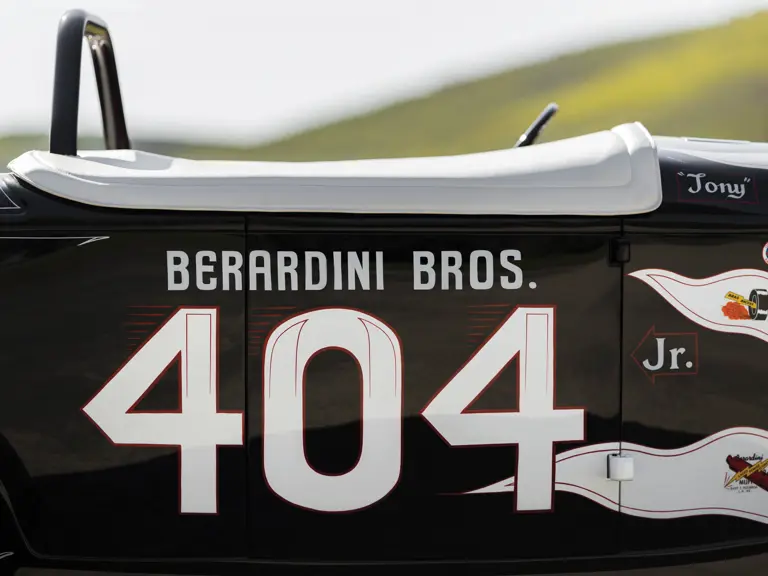
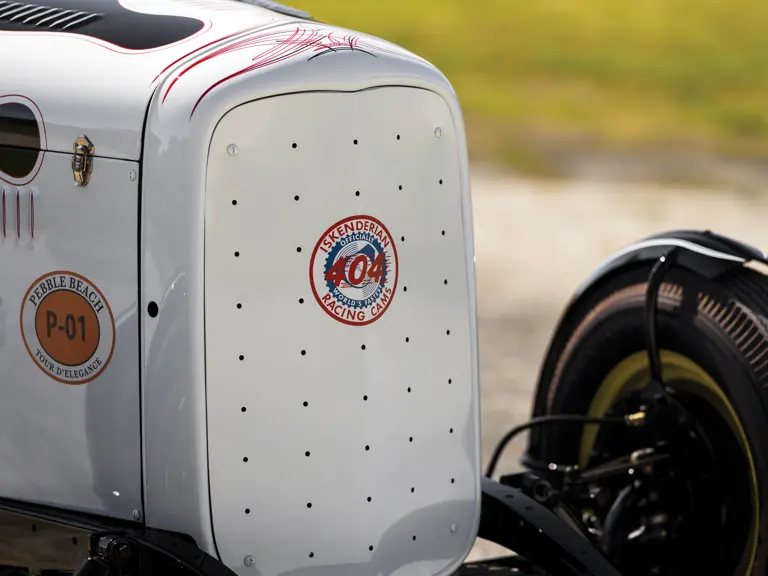
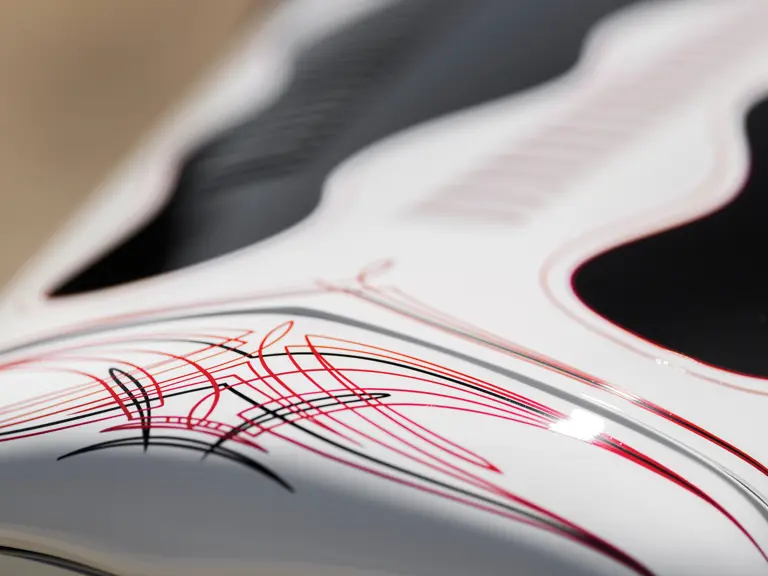
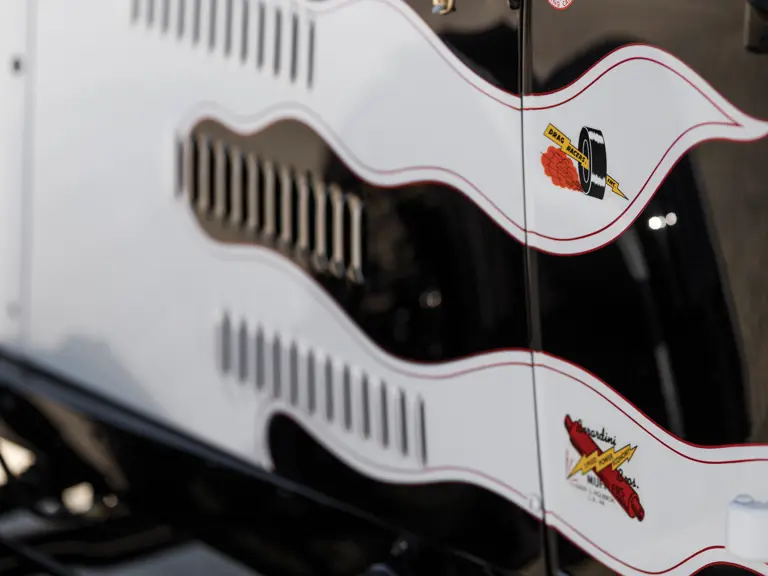

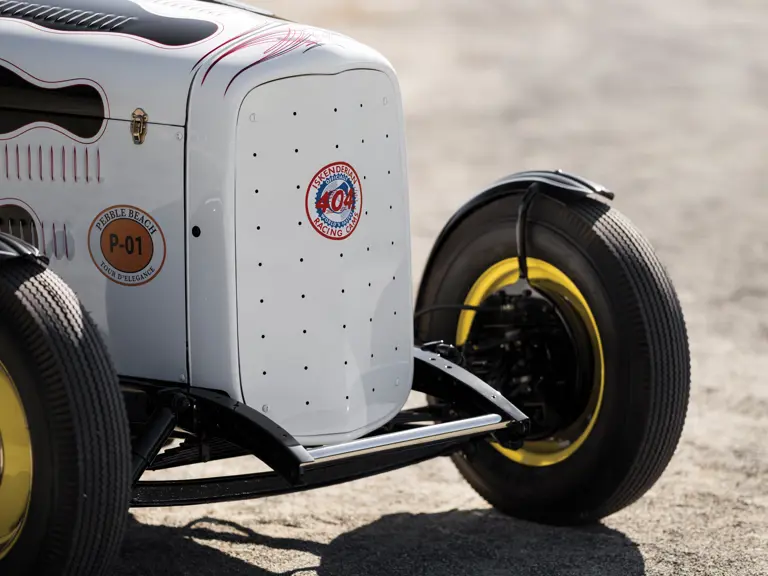
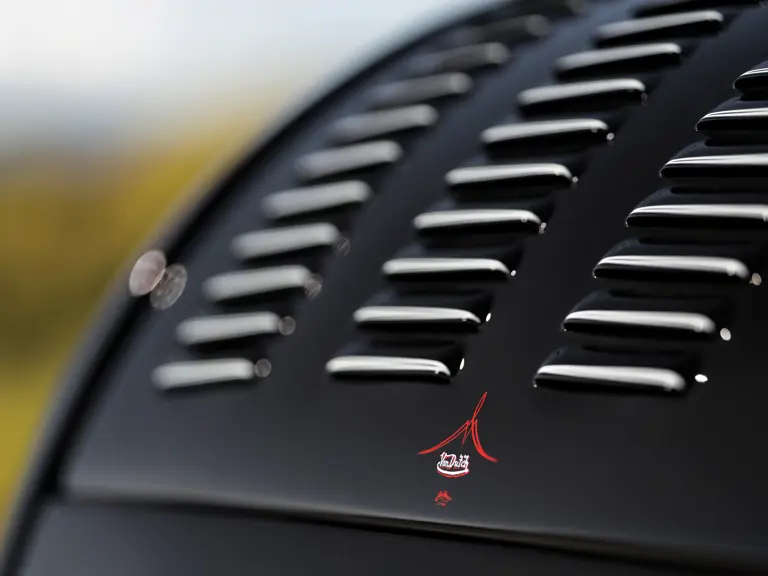
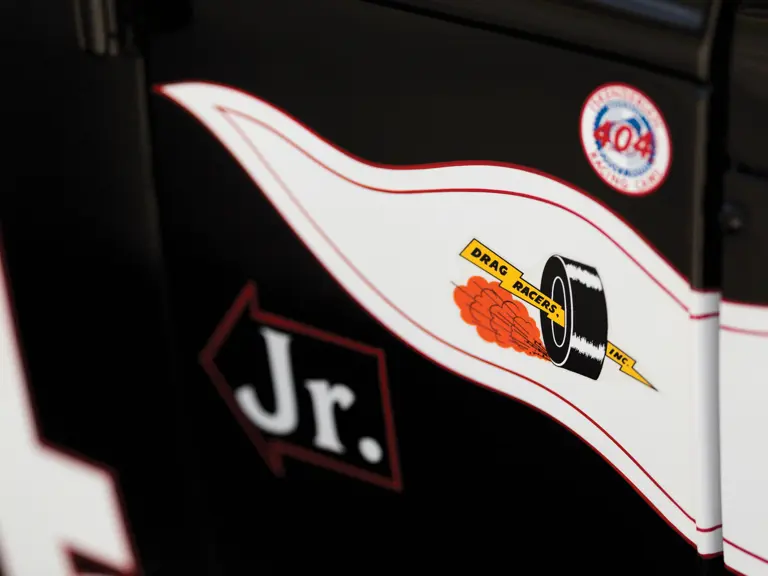

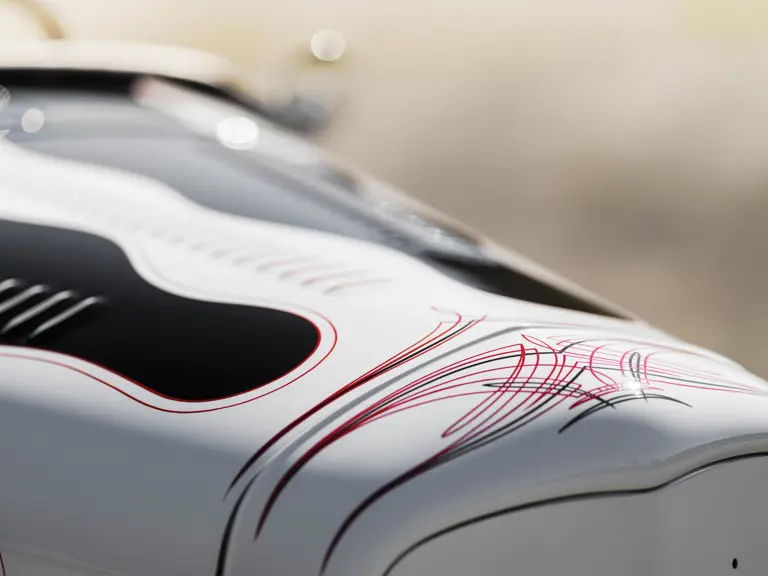
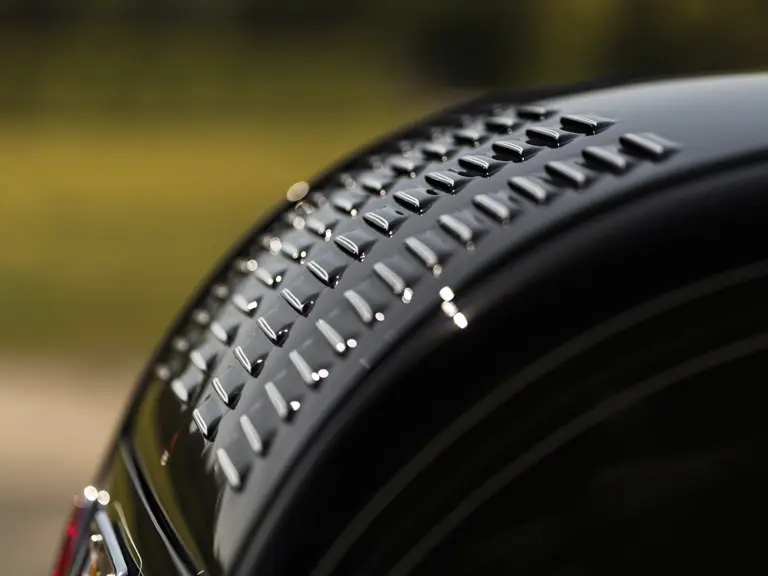
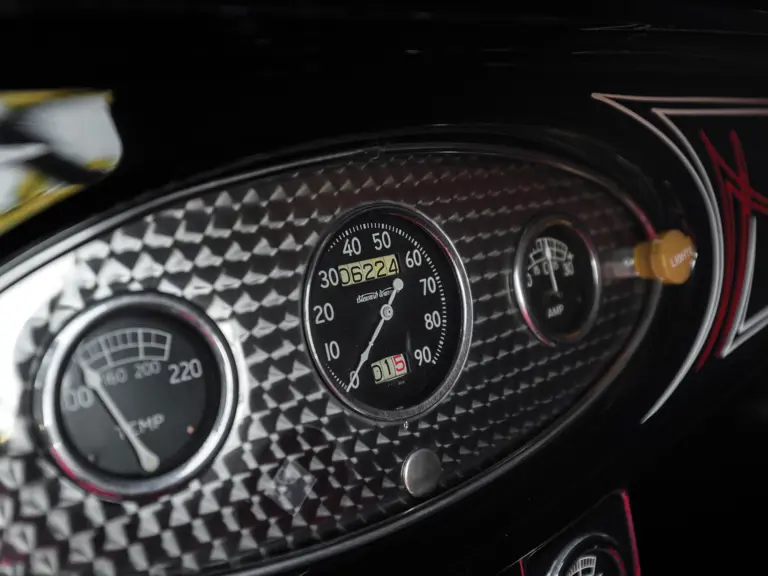
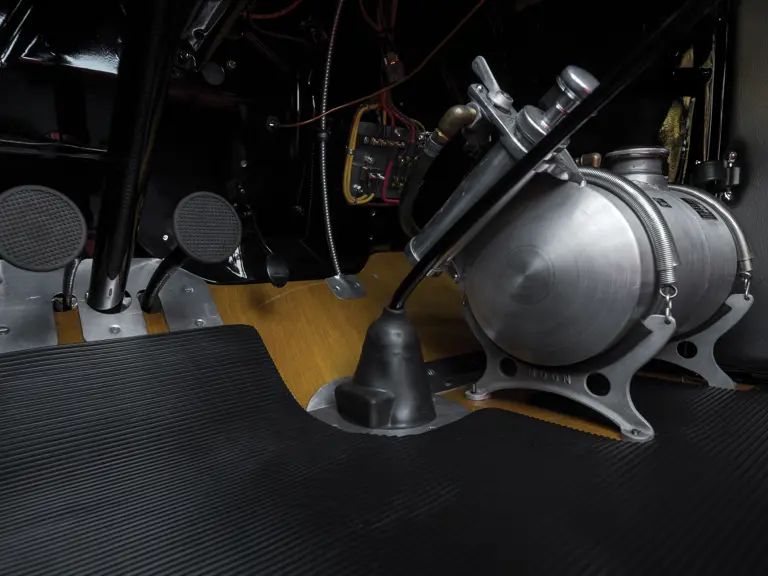

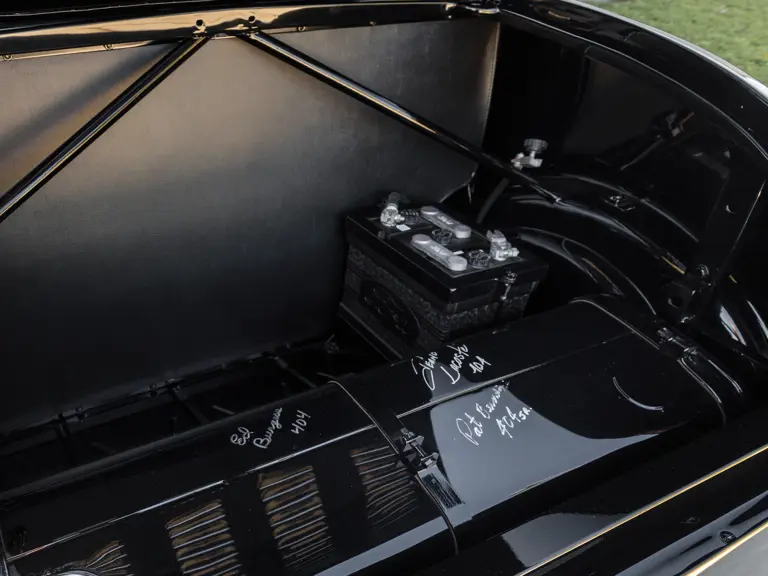

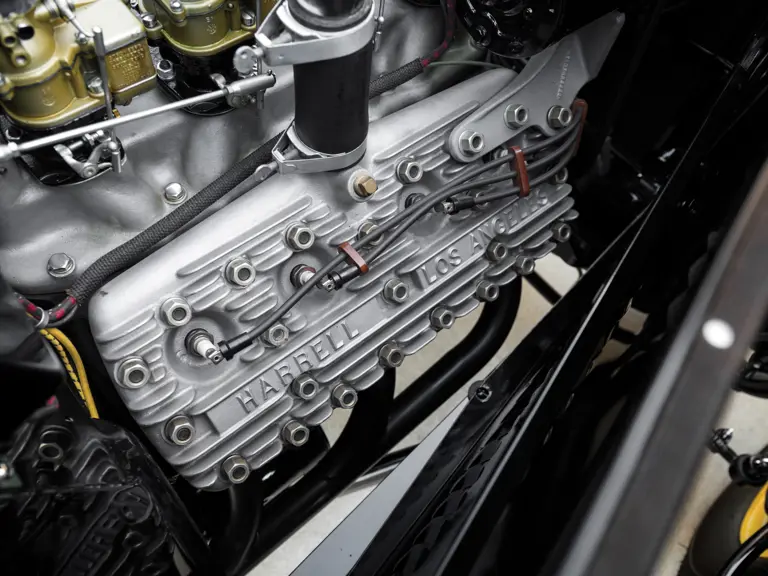
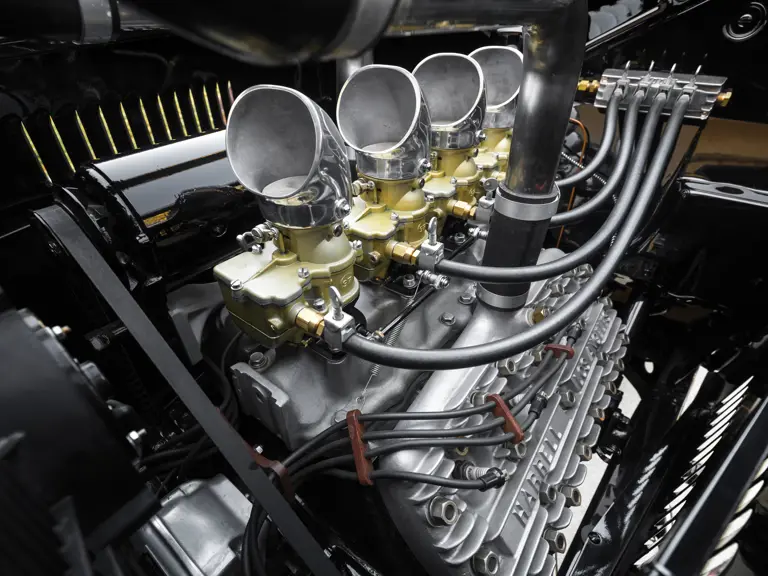
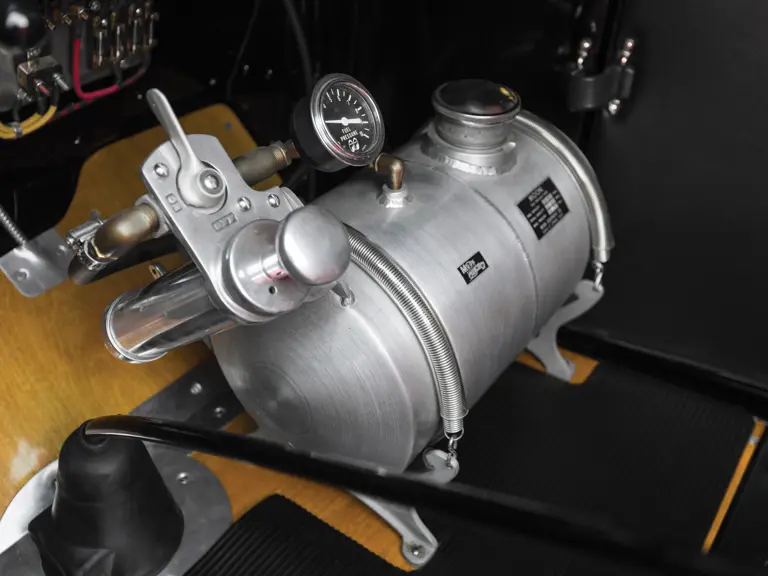
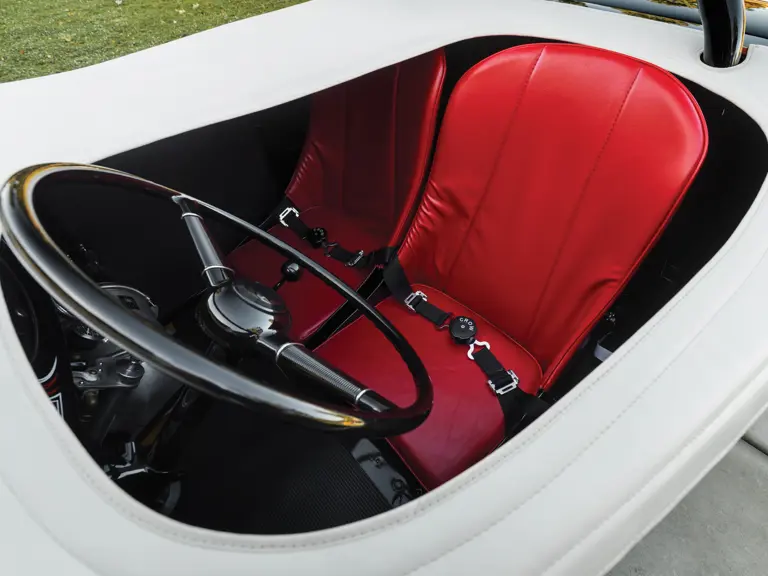
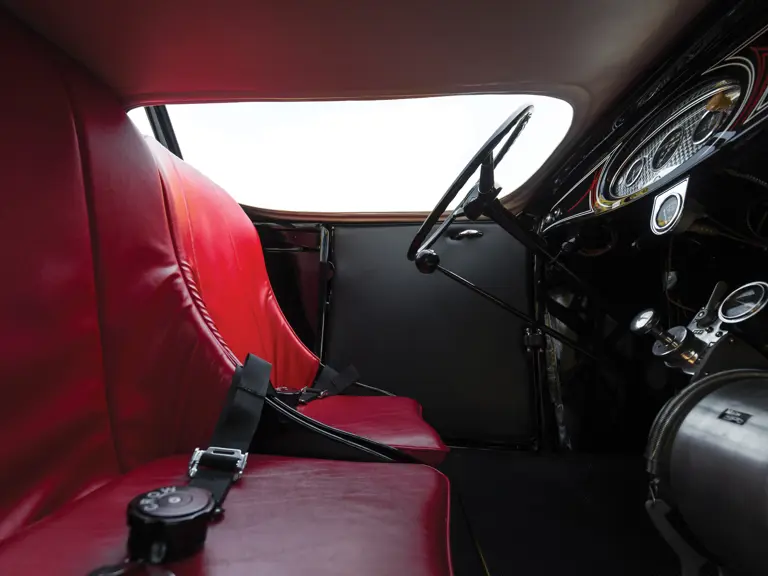
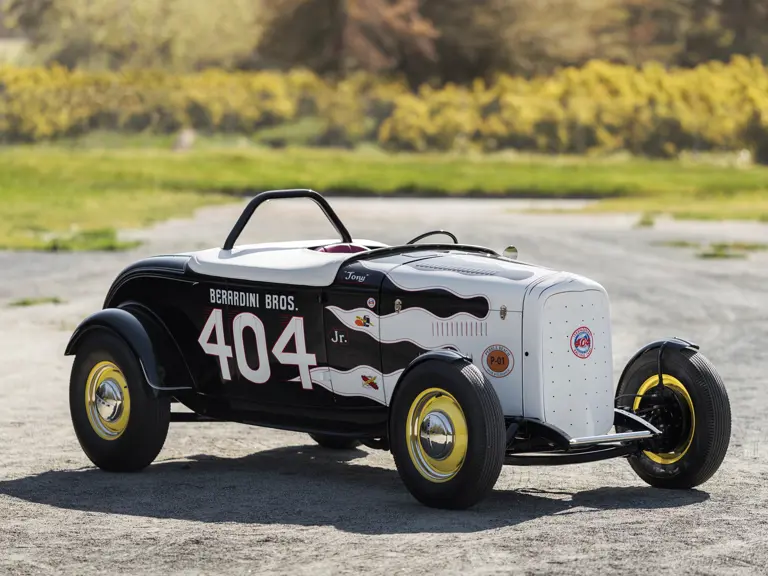
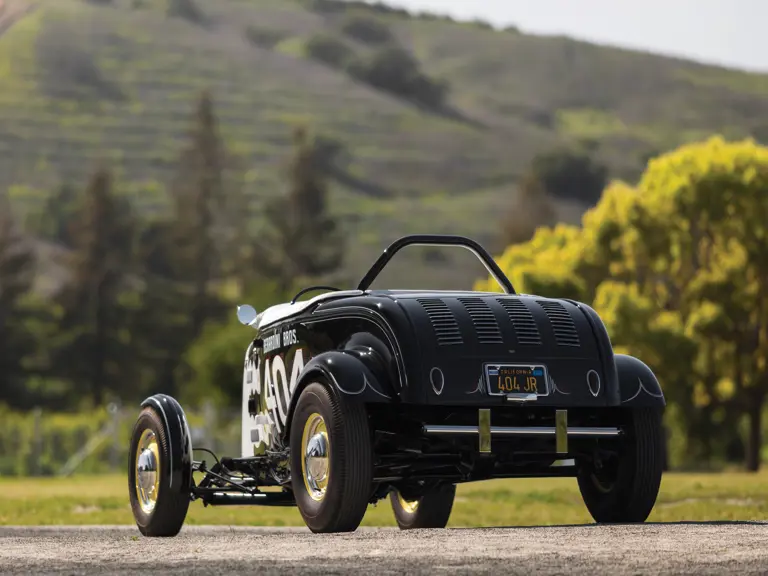




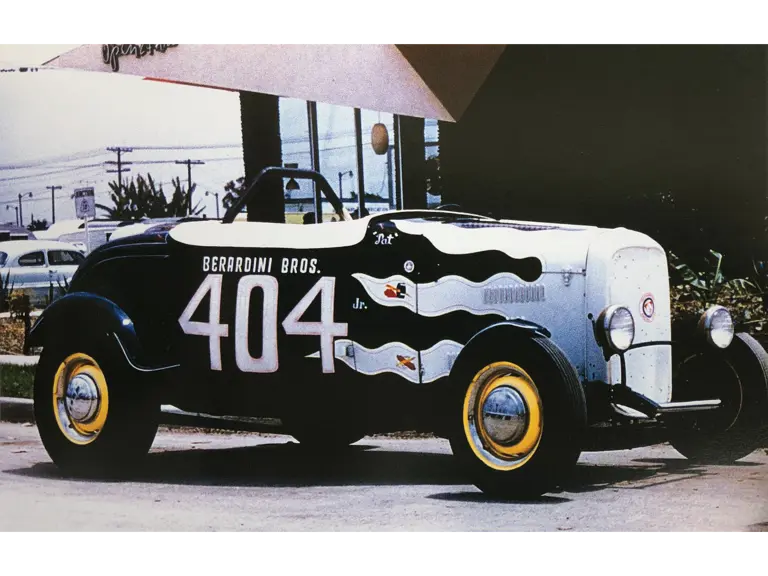
 | Monterey, California
| Monterey, California
